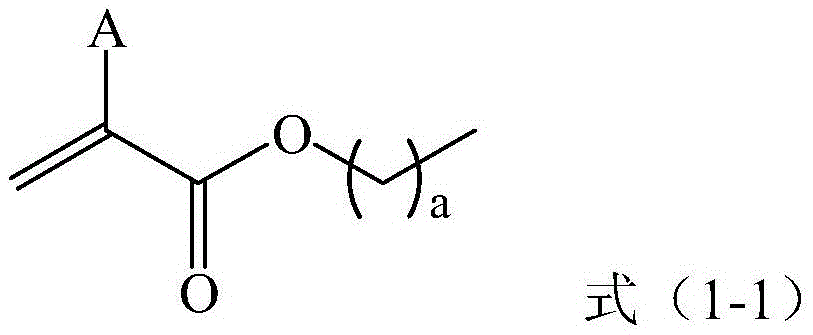Liquid crystal alignment agent, liquid crystal alignment film, and liquid crystal display element
A liquid crystal aligning agent and solvent technology, applied in liquid crystal materials, instruments, optics, etc., can solve the problems of UV decay resistance, uneven hue, uneven hue of liquid crystal display elements, poor electrical properties, etc., and achieve UV decay resistance. good effect
- Summary
- Abstract
- Description
- Claims
- Application Information
AI Technical Summary
Problems solved by technology
Method used
Image
Examples
preparation example Construction
[0232]
[0233] The preparation method of the liquid crystal alignment agent of the present invention is not particularly limited, and can be prepared by a general mixing method. For example, the polymer (A), the polysiloxane (B), and the polymerizable compound (C) containing a benzophenone structure prepared in the above manner are uniformly mixed to form a mixture. Then, the solvent (D) is added under the condition that the temperature is 0°C to 200°C, and the additive (E) is optionally added, and finally the stirring device is continuously stirred until dissolved. In addition, it is preferable to add the solvent (D) at a temperature of 20°C to 60°C.
[0234] At 25° C., the viscosity of the liquid crystal alignment agent of the present invention is generally 15 cps to 35 cps, preferably 17 cps to 33 cps, and more preferably 20 cps to 30 cps.
[0235]
[0236] After the liquid crystal alignment agent of the present invention is coated on the substrate, the coating film o...
Synthetic example
[0260] Synthesis Example A-1-1 to Synthesis Example A-1-5 of the polymer (A) are described below:
Synthetic example A-1-1
[0262] A nitrogen inlet, a stirrer, a condenser, and a thermometer were arranged on a four-necked flask with a capacity of 500 milliliters, and nitrogen was introduced. Then, in the four-necked flask, add 4.86 grams (0.045 moles) of p-diaminobenzene (abbreviated as a2-1), 1.91 grams (0.005 moles) of diamine compounds represented by formula (II-12) (abbreviated as a2-4) and 80 grams of N-methyl-2-pyrolidone (abbreviated as NMP), and stirred at room temperature until dissolved. Next, 9.80 g (0.05 mol) of 1,2,3,4-cyclobutanetetracarboxylic dianhydride (abbreviated as a1-1) and 20 g of NMP were added and reacted at room temperature for 2 hours. After the reaction was finished, the reaction solution was poured into 1500 milliliters of water, so that the polymer was precipitated. Then, the obtained polymer was filtered, washed with methanol and filtered three times, placed in a vacuum oven, and dried at a temperature of 60° C. to obtain the polymer (A-1-1).
[0263] Synthesis Exam...
PUM
| Property | Measurement | Unit |
|---|---|---|
| molecular weight | aaaaa | aaaaa |
Abstract
Description
Claims
Application Information
 Login to View More
Login to View More - R&D
- Intellectual Property
- Life Sciences
- Materials
- Tech Scout
- Unparalleled Data Quality
- Higher Quality Content
- 60% Fewer Hallucinations
Browse by: Latest US Patents, China's latest patents, Technical Efficacy Thesaurus, Application Domain, Technology Topic, Popular Technical Reports.
© 2025 PatSnap. All rights reserved.Legal|Privacy policy|Modern Slavery Act Transparency Statement|Sitemap|About US| Contact US: help@patsnap.com



